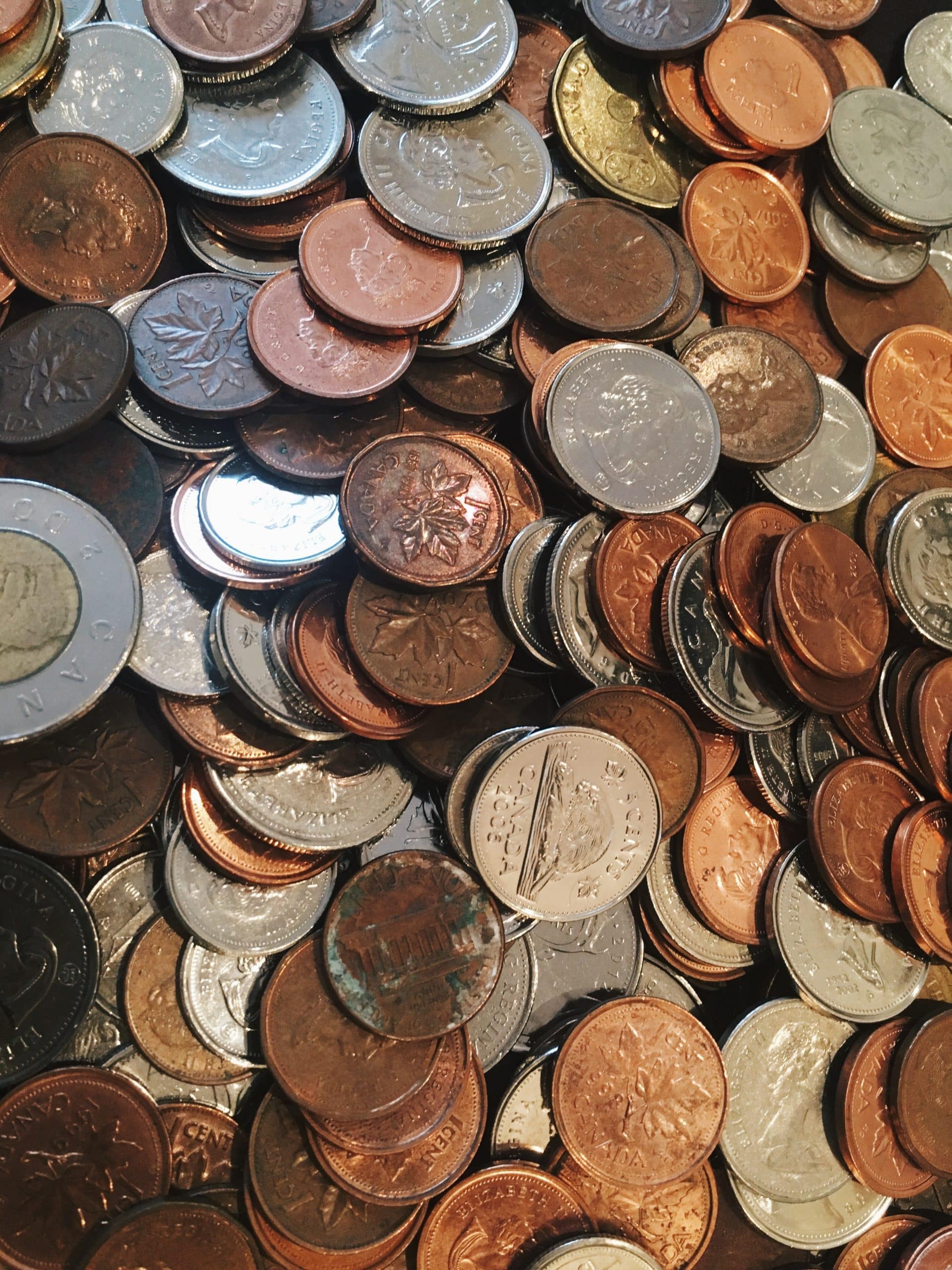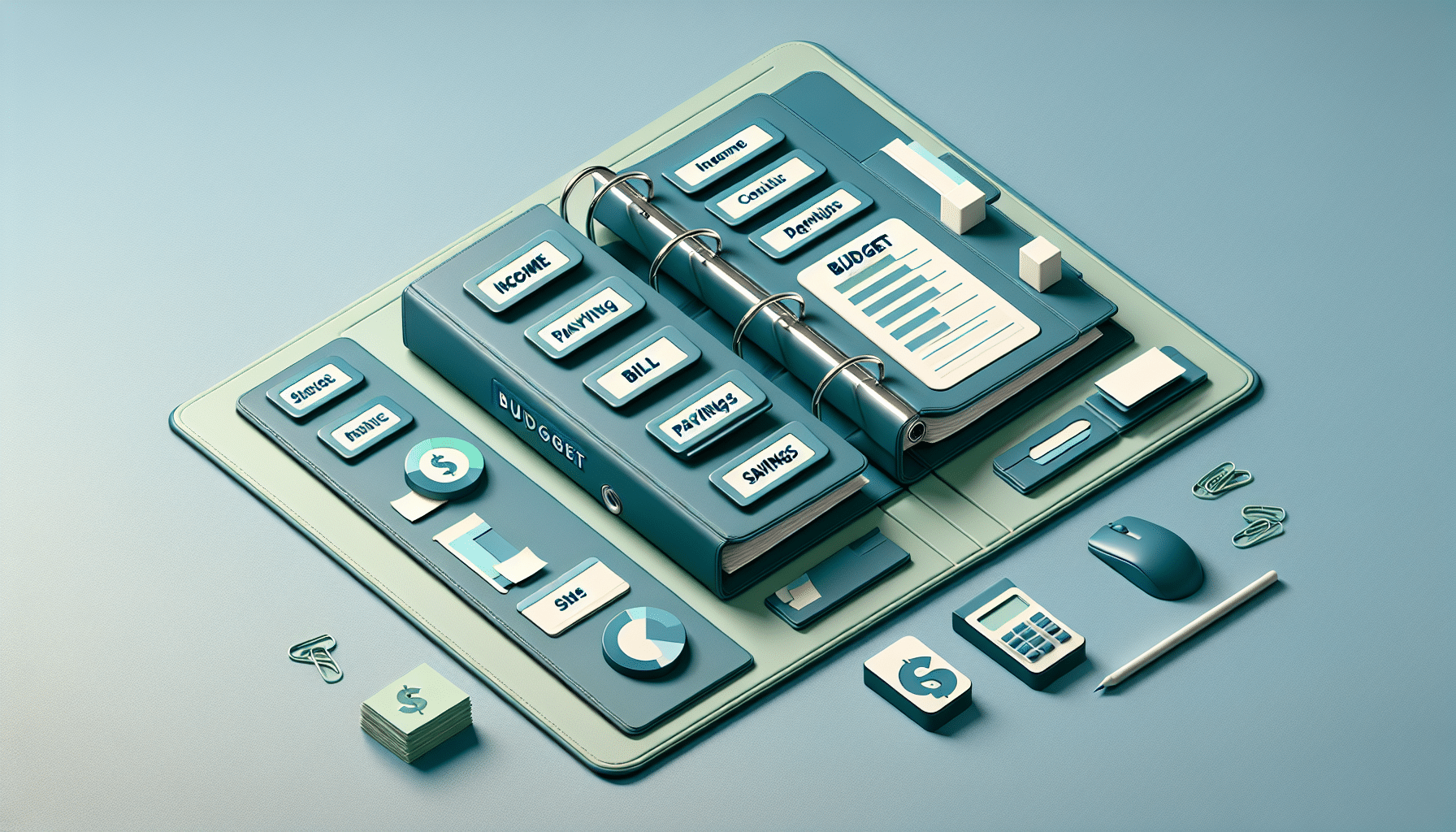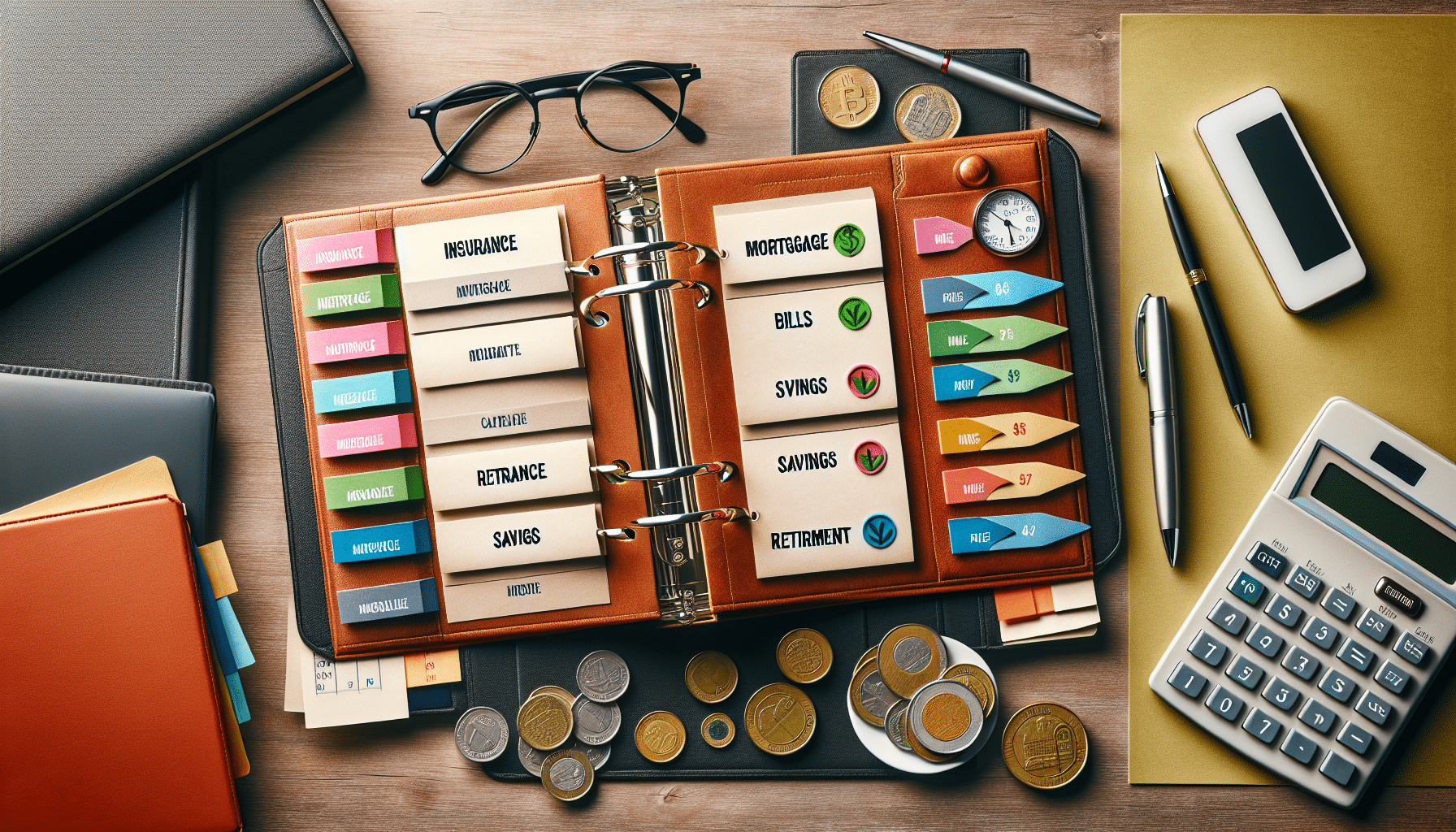Are you tired of feeling overwhelmed and disorganized with your finances? Look no further than a budget binder to maximize your financial organization! A budget binder is an incredibly useful tool that allows for customization based on your individual budgeting needs. It helps you set and track your financial goals, keep tabs on your paychecks, manage your debt payoff journey, track your expenses, and plan for the future. By including essential sections like cover pages, goals pages, expense pages, actual budgets, and check-in pages, your budget binder will become your go-to resource for financial stability. Don't worry, creating a budget binder is a simple and customizable process. All you need is a binder, some colored pens, whiteout, paper clips, dividers, and printable templates to get started on your organized financial journey.
The Comprehensive Guide to Creating and Utilizing a Budget Binder

This image is property of images.unsplash.com.
Cover Page
A budget binder is an essential tool for financial organization and goal setting. It allows you to customize your budgeting method to fit your individual needs. With a well-organized and comprehensive budget binder, you can effectively track your expenses, manage your income, and work towards achieving your financial goals. In this guide, we will walk you through the process of creating and utilizing a budget binder, ensuring that you have all the tools necessary to take control of your finances.
Goals Pages
Setting Financial Goals
One of the key components of a budget binder is setting clear and achievable financial goals. By defining your goals, you can create a roadmap for your financial journey. Whether you aim to save for a dream vacation, pay off debt, or build an emergency fund, it is crucial to set targets that are realistic and measurable. When setting your financial goals, consider factors such as timeframe, priority, and the amount of money needed. Remember, your goals should be specific, measurable, achievable, relevant, and time-bound (SMART).
Tracking Progress
Once you have established your financial goals, it is essential to track your progress regularly. Include a dedicated section in your budget binder to record and monitor your progress towards each goal. This will help you stay motivated, identify any obstacles or challenges, and make adjustments as needed. You can create a progress tracker using graphs, charts, or simply a written log to visually see your accomplishments. Celebrate each milestone reached, as this will reinforce your financial progress and inspire you to keep going.
Revisiting and Adjusting Goals
As life circumstances change, it is crucial to revisit and adjust your financial goals accordingly. A budget binder provides you with the flexibility and structure to modify your goals as needed. For example, if you experience a change in income or unexpected expenses arise, you may need to adjust your savings targets or debt repayment plan. By regularly reviewing and reassessing your goals, you can ensure that they remain realistic and achievable. Remember, it is okay to revise your goals if your financial situation or priorities change.

This image is property of images.unsplash.com.
Expense Pages
Creating Categories
To effectively track your expenses, you need to create categories that reflect your spending habits and financial priorities. These categories will vary depending on your individual lifestyle and financial goals. Common expense categories include housing, transportation, groceries, entertainment, healthcare, and debt payments. Take the time to analyze your spending patterns and determine the areas where you spend the most. This will enable you to create categories that accurately represent your expenses and allow for effective tracking.
Recording Expenses
Once you have established your expense categories, it is time to record your expenses in your budget binder. This can be done daily, weekly, or monthly, depending on your preference and the level of detail you want to maintain. By diligently recording your expenses, you can gain a clear understanding of where your money is going and identify any areas of overspending. Be sure to include the date, description, category, and amount for each expense. This information will prove valuable when analyzing your spending patterns and making necessary adjustments.
Analyzing Spending Patterns
Regularly analyzing your spending patterns is a crucial step in achieving financial stability. Your budget binder allows you to review your expenses and identify any trends or opportunities for improvement. With a detailed record of your spending, you can easily spot areas where you may be overspending or prioritize expenditures that align with your financial goals. Analyzing your spending patterns will enable you to make informed decisions about managing your money better and ultimately help you achieve your financial goals faster.
Actual Budgets
Recording Income
In addition to tracking expenses, it is equally important to record your income in your budget binder. This will give you a clear picture of how much money you have coming in and how it compares to your expenses. Include all sources of income, such as salary, freelance work, investments, or side hustles. By recording your income, you can accurately calculate your net income and determine how much you have available for budgeting and saving.
Allocating Budget Categories
Once you have recorded your income and tracked your expenses, it is time to allocate your budgeted amounts to each category. This step ensures that you have a realistic spending plan in place and helps you prioritize your financial goals. Assign a specific dollar amount or percentage of income to each category based on your spending priorities. Be mindful of any fixed expenses, such as rent or loan payments, and allocate funds accordingly. A well-organized budget binder will provide you with a clear overview of your allocated budget and allow you to stay on track.
Adjusting as Needed
Life is unpredictable, and unexpected expenses or changes in income may occur. Your budget binder allows you to make adjustments to your budget as needed. If you encounter an unexpected expense, you can reevaluate your spending categories and reallocate funds accordingly. Additionally, if your income increases or decreases, you can modify your budgeted amounts to reflect these changes. Regularly reviewing and adjusting your budget will help you maintain financial stability and ensure that your budget remains realistic and adaptable to your financial situation.

This image is property of images.unsplash.com.
Check-In Pages
Regularly Reviewing Expenses
To stay on top of your finances, it is crucial to regularly review your expenses. Set aside time each week or month to review your budget categories and expenses recorded in your budget binder. This will help you identify any areas of overspending, track your progress towards your financial goals, and make adjustments as necessary. Regularly reviewing your expenses will also serve as a reminder to stay accountable to your budget and make mindful spending choices.
Identifying Areas of Improvement
While reviewing your expenses, be sure to identify areas where you can make improvements. Look for opportunities to cut costs, eliminate unnecessary expenses, or find more affordable alternatives. For example, you may discover that eating out is a significant expense, and by cooking more meals at home, you can save a substantial amount of money. By identifying areas of improvement, you can make informed decisions that align with your financial goals and lead to better budget management.
Celebrating Achievements
The journey towards financial stability and achieving your goals can be challenging. Remember to celebrate your achievements, no matter how small they may seem. Each milestone reached is a step closer to financial freedom and deserves recognition. Use your budget binder to mark your accomplishments, whether it's paying off a debt, reaching a savings goal, or successfully sticking to your budget for a specific period. Celebrating achievements will motivate you to continue making progress and reinforce your commitment to your financial well-being.
Debt Payoff Tracking
Listing Debts
If you have outstanding debts, it is essential to include a section in your budget binder dedicated to debt payoff tracking. List all your debts, including credit cards, loans, and any other outstanding balances. Include the name of the creditor, the total amount owed, the interest rate, and the minimum monthly payment. Having a comprehensive list of your debts will allow you to visualize your overall financial situation and prioritize your debt repayment strategy.
Creating a Repayment Plan
Once you have listed all your debts, it is time to create a repayment plan. Start by determining your desired timeframe for becoming debt-free. Then, consider different debt repayment strategies, such as the snowball or avalanche method, to decide which approach aligns best with your goals and financial situation. You can use your budget binder to outline your repayment plan, including how much extra money you can dedicate to debt payments each month. Having a clear plan will help you stay focused and motivated as you work towards becoming debt-free.
Tracking Progress
As you progress in your debt repayment journey, it is crucial to track your progress and monitor your success. Include a section in your budget binder to record the date and amount of each debt payment made. Update your repayment plan accordingly by subtracting the amount paid from the total debt owed. This tracking system allows you to see your progress over time, celebrate each debt milestone reached, and stay motivated on your path to financial freedom.

Paycheck Tracking
Recording Paycheck Amounts and Dates
To effectively manage your income, it is important to record your paycheck amounts and dates in your budget binder. Include a section where you can log each paycheck received, noting the amount earned and the date it was deposited. Recording this information will help you track your income and ensure that all payments are accurately reflected in your budget.
Calculating Net Income
In addition to recording paycheck amounts, calculating your net income is essential for accurate budgeting. Net income is the amount of money you actually take home after taxes and deductions. Deduct any necessary expenses, such as taxes, health insurance, and retirement contributions, from your paycheck amount to determine your net income. Including your net income in your budget binder will allow you to allocate funds accurately and avoid overspending.
Allocating Funds
With a clear understanding of your paycheck amounts and net income, it is time to allocate funds to different categories. Refer to your budgeted amounts for each category and distribute your paycheck accordingly. Prioritize essential expenses such as rent, utilities, and groceries, before allocating funds to discretionary spending or savings. By allocating funds based on your budget, you can effectively manage your income and ensure that you are staying within your financial means.
Expense Tracking
Tracking Daily Expenses
Tracking your daily expenses is a vital step in maintaining control of your finances. Include a section in your budget binder to log each expense as it occurs. This can be done by carrying a small notebook or using a budgeting app on your phone. Record the date, description, category, and amount for each expense. Make it a habit to review and input your daily expenses into your budget binder regularly. By diligently tracking your expenses, you will have a comprehensive record of your spending habits and can make necessary adjustments to stay on budget.
Categorizing and Analyzing Spending
Once you have recorded your daily expenses, it is essential to categorize and analyze your spending. Transfer the recorded expenses into your budget binder, categorizing each expense according to your predefined expense categories. This will allow you to see where your money is going and identify any areas where you may need to cut back or reallocate funds. By analyzing your spending patterns, you can make informed decisions that align with your financial goals and prioritize your budgeting efforts.
Identifying Trends and Opportunities
Regularly analyzing your spending habits will enable you to identify trends and opportunities for financial improvement. Look for patterns in your spending, such as recurring expenses or areas where you consistently overspend. Use this information to find opportunities to reduce costs or adjust your budget as needed. For example, if you notice that you are consistently overspending on dining out, you may want to consider cooking more meals at home to save money. Identifying trends and opportunities will allow you to make informed decisions and take control of your finances.

Planning Purposes
Forecasting Future Expenses
Planning for future expenses is a crucial aspect of financial management. Use your budget binder to forecast and track upcoming expenses. This can include anticipated bills, upcoming vacations, or any other financial obligations you may have. By planning ahead, you can allocate funds accordingly and avoid any last-minute financial stress. Your budget binder will serve as a valuable tool in forecasting future expenses and ensure that you are adequately prepared.
Saving for Future Goals
In addition to planning for future expenses, your budget binder can also be a powerful tool for saving towards future goals. Whether you want to save for a down payment on a house, start a family, or build an emergency fund, your budget binder will help you track your progress and stay focused. Set aside a section dedicated to your savings goals, including the desired amount, target date, and progress towards each goal. Regularly reviewing your savings goals in your budget binder will remind you of your financial aspirations and inspire you to continue working towards them.
Creating Long-Term Budgets
As your financial situation evolves, so should your budget. Your budget binder provides you with the flexibility to create long-term budgets that align with your changing needs and goals. Consider your long-term financial aspirations, such as retirement planning or saving for your child's education. As you create long-term budgets, remember to revisit and adjust them regularly to stay on track. By including long-term budgets in your budget binder, you can maintain financial stability and plan for a secure future.
Binder Organization
Choosing the Right Binder
Selecting the right binder for your budgeting needs is essential. Choose a binder that is sturdy, durable, and large enough to hold all your financial documents, printables, and dividers. Consider factors such as size, ring type, and aesthetics to ensure that your binder is both functional and visually appealing. Remember, your budget binder should be a tool that inspires and motivates you to stay organized and on track with your financial goals.
Utilizing Dividers and Paper Clips
Dividers and paper clips are valuable organizational tools in your budget binder. Use dividers to separate different sections, such as goals pages, expense pages, actual budgets, and check-in pages. This ensures that you can easily navigate through your binder and find relevant information quickly. Use paper clips to group related documents or receipts together within each section. By utilizing dividers and paper clips effectively, you can maintain an organized and efficient budget binder.
Organizing Sections
When organizing your sections, consider the flow and logic of your budgeting process. Start with the cover page, followed by goals pages, expense pages, actual budgets, check-in pages, and any other relevant sections based on your individual budgeting needs. Within each section, arrange documents and printables in a logical order, such as chronologically or by category. This will ensure that your budget binder is easy to navigate and allows for efficient tracking and reference.
In conclusion, a budget binder is a valuable tool for achieving financial organization and goal setting. By following the steps outlined in this comprehensive guide, you can create and utilize a budget binder that fits your individual needs. Whether you are tracking expenses, managing income, paying off debt, or planning for future goals, your budget binder will serve as a valuable resource. Remember to regularly review and adjust your budget, track your progress towards your goals, and celebrate your achievements along the way. With dedication and consistency, your budget binder will empower you to take control of your finances and achieve long-term financial stability.

